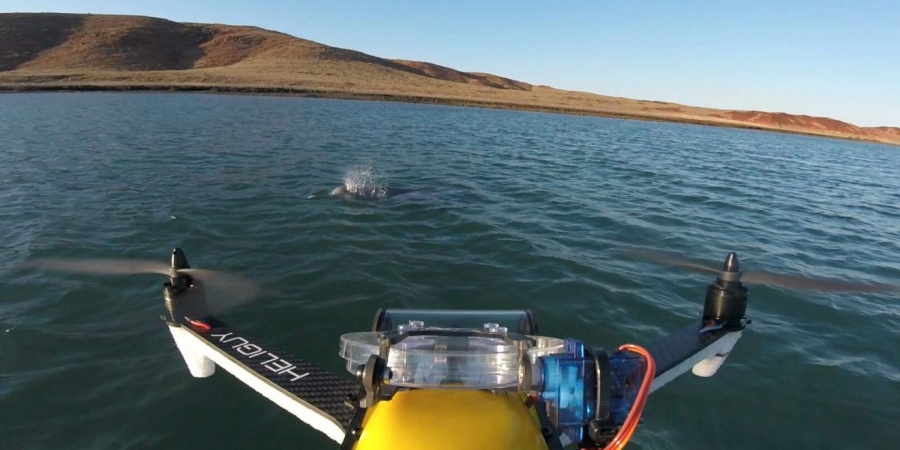
An international team of marine biologists and geneticists have used remotely piloted aircraft (drones) to collect blow (snot) samples from wild dolphins off the coast of WA.
When dolphins exhale, their blow contains biological information such as bacteria, DNA and hormones from the respiratory system that provides a snapshot of dolphin health.
Waterproof drones were successfully adapted to catch dolphin blow from bottlenose dolphins and a humpback dolphin off the coast of WA in the Dampier Archipelago last year.
The research involved a team of marine biologists, geneticists and pilots from the Department of Biodiversity, Conservation and Attractions (DBCA), Murdoch University, Heliguy Scientific and Macquarie University.
DBCA research scientist and project leader Dr Holly Raudino said this new technique may become an alternative method for collecting DNA in the future and may be useful for cetacean species that are boat shy.
“Previously scientists have had to use more invasive methods such as biopsy darts that involve a close approach by boat,” Dr Raudino said.
“This research highlights the use of drones as an alternative to collect samples from wild dolphins and means that researchers can stand off at a distance, while the drone approaches and collects the sample via an opening and closing petri dish with no direct contact with the dolphin.”
Macquarie University marine scientist Dr Vanessa Pirotta originally developed the custom-built drone that was used with Heliguy Scientific for capturing whale snot.
"Operation of the drones requires precision timing to capture the blow, which for dolphins may only go as high as a metre above the ocean surface," Dr Raudino said.
“Our specialist research team has mastered the technique of safely flying the drones close to the water to achieve this.”
The paper can be viewed at: http://onlinelibrary.wiley.com/doi/10.1002/ecs2.2901/full
The digital object identifier (DOI) is 10.1002/ecs2.2901